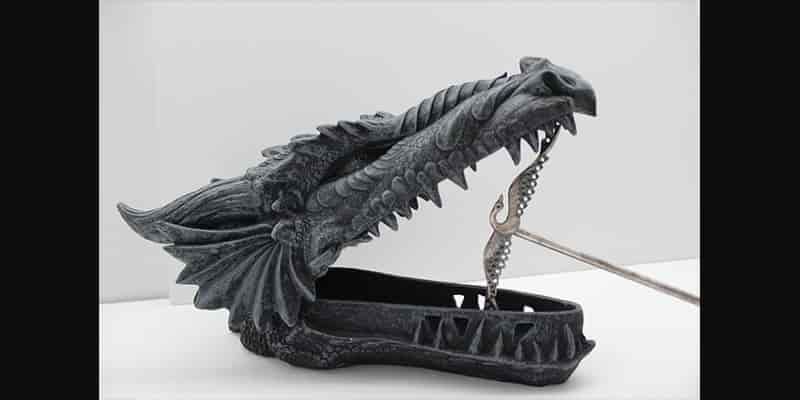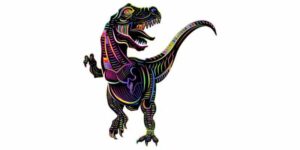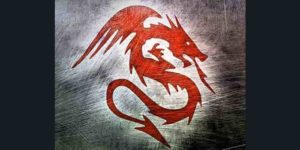Kobolds in Dungeons and Dragons 5e are small lizard people who gain a +2 Dexterity/-2 Strength ability score effect. This small, reptilian race is often used for early-level villains—much like a goblin, but in lizard form. However, playing one of these minions offers a creative challenge, complete with reptile themes and cowardice.
When building a kobold character in Dungeons and Dragons 5e, consider the following elements and classes:
- Kobold characteristics and backstory
- Special abilities- Grovel, Cower and Beg, Pack Tactics
- Rogue Assassin
- Ranger Beastmaster (giant lizard, giant poison snake)
- Bard College of Creation
- Sorcerer- Draconic Bloodline
Kobold characteristics and backstory
The kobold race look like small lizard-like minions who often cause trouble in early adventures as monsters. However, Volo’s Guide to Monsters introduces a playable version of this troublemaking monster.
Though kobolds are much like goblins, raiding and stealing villages and travelers, they seem to be more social. Therefore, the tribe comes before all. They are, after all, small hunters. So, they carry a tendency to form pack relationships and strategies. Perhaps they pull from their Dragonborn cousins in this way, giving them a hint of honor in an otherwise cowardly life.
This character is not the hero but can have great story moments of heroism. For me, this makes a fun opportunity to play something outside the ordinary. I can grovel and run away and steal—either making fun trouble in a social setting or bringing my style of sabotage to a combat scenario.
Special abilities- Grovel, Cower and Beg, Pack Tactics
Along with the kobold’s ability score changes of +2 Dexterity/-2 Strength, they come with several racial abilities that come in handy for a group. These traits play off their pack dynamic, utilizing stronger characters to pull off their schemes.
Grovel, Cower and Beg is a trick I use to grant advantage against enemies within 10 feet. The idea is that I create a pitiful distraction while my allies strike the distracted foe. Like I said—not the hero.
However, I’ll also gain Pack Tactics, giving me advantage on attack rolls when allies are within 5 feet of me. I like how this race plays with advantage—essentially taking the Pack Tactics and creating a race. Plus, this natural ability plays off ambush and trickery, something I’ll want to key in on if I want to survive.
Unfortunately, I also gain Sunlight Sensitivity, which gives me disadvantage on Perception checks in direct daylight. The lurking nature of the reptilian kobolds mean they are used to subterranean environments and deep forests. Like nearly every other inhuman race, they also gain Darkvision.
Related Posts
Guide to Building a Dinosaur Adventure: DnD 5e
| Guide to Playing a Dragonborn Character: DnD 5e
|
Rogue Assassin
My first concept is a rogue assassin, playing off my lurking nature and Dexterity bonus. This character will play off my lizard-monster nature—a bit nefarious. Plus, the reptilian background fits nicely with a poison master, which comes with the Assassin subclass.
Among other things, the basic rogue class grants me Expertise, Sneak Attack and proficiency with thieves’ tools. I can double a proficiency score with Expertise, adding my thieves’ tools as an option. I’ll want to pick Stealth and thieves’ tools for this build. Plus, Sneak Attack grants me 2d6 extra damage at early levels, raising to 3d6 by level 5. This extra damage continues to grow as I level and is added when I have advantage on an attack.
The Assassin archetype grants me deadly abilities with the poisoner’s kit, disguise kit and the Assassinate ability. Of course, the poison kit element will be fun during game. I’ll collect and experiment as I go. However, Assassinate grants me advantage against foes who haven’t take their first turn in combat. Also, any hit I score against a creature who is surprised is a critical hit.
Check out more on Rogue Assassin Builds Here.
Ranger Beastmaster (giant lizard, giant poison snake)
Another natural fit for the kobold is a ranger. With Dexterity as my best ability score, I’ll naturally want to use bows, spears and shortswords to land hits and deal damage. Therefore, any ranger build could work well. However, I think we could play up this ranger as a Beastmaster with reptilian pets. I imagine riding on the back of a giant lizard like a mount—lizard buddies for life.
My classic ranger class gives me tracking, survival and combat options for the Dexterity ability score. I’ll choose Archery Fighting Style to add +2 to my attack roll. This way, I’m not in the mix and can hide behind my pet or an ally. Plus, I’ll choose spells like hunter’s mark and hail of thorns to increase my ranged damage.
When I choose the Beastmaster archetype at level 3, I gain a special pet that can attack and move around the field. This creature must be a ¼ CR or lower but receives my proficiency bonus to AC, attack rolls and saving throws in proficient skills. What’s fun about this build is my selection of pet. I can choose a giant lizard or giant poisonous snake to fit my reptile vibe.
Check out my BeastMaster Guide Here.
Bard College of Creation
With abilities like Grovel, Cower and Beg, a wisecracking bard could be a fun fit for this nonheroic character. I could keep away from harm, granting my friends Bardic Inspiration and casting spells. Of course, my signature move with this charismatic goof is Grovel, Cower and Beg. However, the College of Creation can further add to my group dynamic and grant me an animated item to act as a tank.
Basic bard abilities include Jack of All Trades, Expertise and Bardic Inspiration. Therefore, my character will act as a skill specialist and gain impressive bonuses to certain skills. Bardic Inspiration can be granted to friends as a 1d6 die. They can add a roll of this die to an attack roll, saving throw or ability check.
Of course, I’ll also gain spells from the Bard Spell List, including: mage hand, vicious mockery, thunderwave and charm person.
The College of Creation gives me advanced Bardic Inspiration with Motes of Potential, adding cool effects when my ally uses the die. For ability checks, the Mote of Potential adds the highest of 2 Bardic Inspiration rolls to the roll. Finally, using Bardic Inspiration for saving throws grants the target temporary hit points.
Performance of Creation gives me the ability to animate an object, causing creatures surrounding the object to increase or decrease walking speed. It seems to me like the object is making creatures dance uncontrollably, which is hilarious. Plus, it packs a Force-Empowered Slam with 1d10 + proficiency force damage.
Sorcerer- Draconic Bloodline
There’s no real inherent reason why kobolds should play sorcerers other than the draconic heritage. This tiny lizard man is going to call upon the primordial power of dragons—eventually growing dragon wings and transforming his body.
Sorcerers gain benefits to magic through Sorcery Points and Meta Magic. Sorcery Points give me greater flexibility with spell slots—sacrificing Sorcery Points for bonus slots, slots for Sorcery Points, and Sorcery Points for Meta magic effects. My favorite choices for Meta Magic are Twinned Spell (doubling the spell) or Empowered Spell (roll damage twice and take highest roll).
My Draconic Bloodline origin gives me advantages to elemental magic connected to my dragon color. First, I gain resistance to this damage type and an AC of 13 + Dexterity with dragon scales. However, level 6 gives me Elemental Affinity, adding my Charisma modifier to elemental magic related to my draconic bloodline. Therefore, I’ll choose spells like fire bolt, burning hands and shield for magic combat for a red dragon kobold sorcerer.




